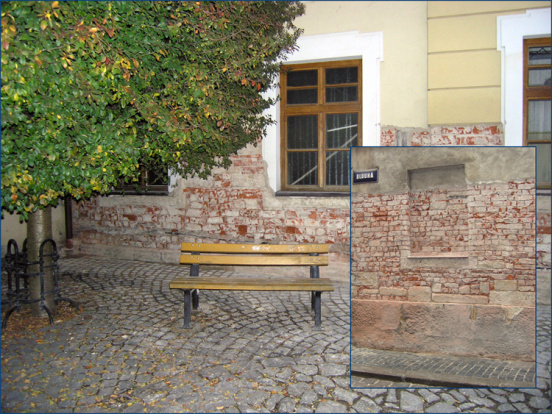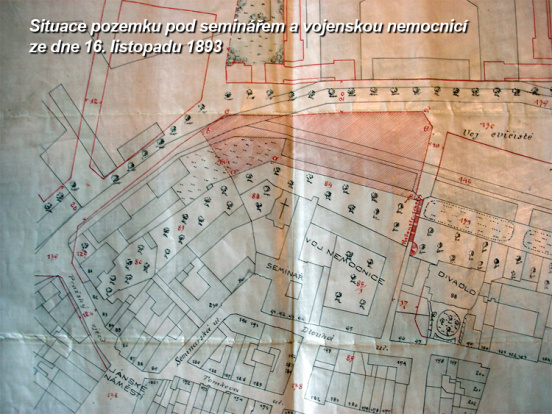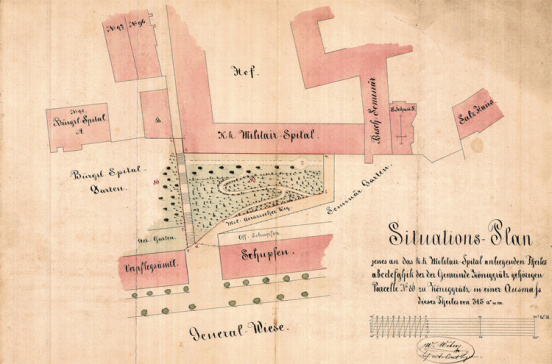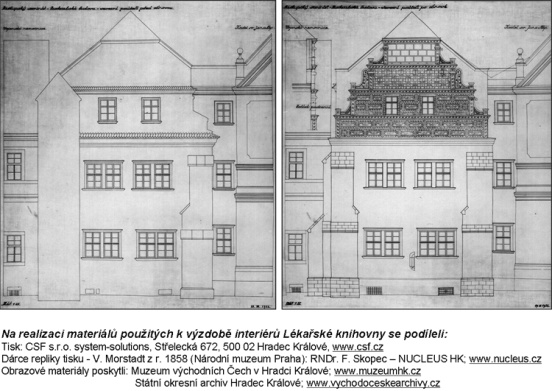The fortified settlement at the confluence of the Elbe and Orlice rivers was part of the castle system of the Přemyslid princes since the 10th century. In 1225, King Přemysl Otakar I granted Hradec city rights and at the beginning of the 14th century it became the dowry town of Czech queens. The royal castle was destroyed in 1423 during the Hussite wars that affected the town.

In the first half of the 16th century, part of the ruins were rebuilt and around 1556 the purgatorial court for the Hradec Králové region was established. When this office was transferred to Prague, Emperor Joseph I, by a special letter dated 23 September 1706 in Vienna, granted "the Purrake House to Bishop Tobias for his use, and for him and his canons to arrange residences there".

During the time of Bishop Tobias Jan Becker, the construction of the bishop's residence, the bishop's seminary with the Church of St. John of Nepomuk, the canon houses near the Church of the Holy Spirit, the bishop's castle and the parish church in Chrast was started. However, most of the buildings were completed by his successors.
In 1706, Bishop Becker managed to acquire the building of the Hradec purgatory, which was located near the former royal castle. The purgatorial house had one floor, the ground floor contained a vaulted hall in which the purgatorial court was held. The walls of the hall were decorated with paintings of knights' coats of arms. This room was later used as a seminary oratory.
Bishop Becker bought three houses for his residence. However, he found it more necessary to establish a seminary than to build a residence. Therefore, with the financial support of the Papal See, the construction of the Church of St. John of Nepomuk and the restoration of the building of the purgatorial court for the seminary began in 1709. The work on the restoration of the seminary lasted five years and in May 1714, six alumni entered the seminary under the leadership of the rector Jiří Prusa. The establishment of the theological seminary was intended to help with the education of the priestly youth.
However, the premises of the seminary were insufficient and therefore in 1765 the burnt down site of the neighbouring burgher house No. 91 was purchased and adapted for the needs of the seminary.
In 1776, in place of the wooden fence enclosing the courtyard in front of the church, an overhanging wall with a gate was built, above which a statue of St. John of Nepomuk was placed at the expense of the diocesan clergy.
In the school year 1802-1803, a total of 94 theologians studied at the theological school, and the number remained similar in subsequent years. The lowest number of students was recorded in 1836, with only 75 divines, and the highest number in 1807, with a total of 145 students. In 1816 the seminary expanded its library with lending rights limited to clergy.

With the expansion of the number of students, the existing seminary buildings were no longer sufficient. Bishop Trautmansdorf therefore purchased the neighbouring building no. 92 for the seminary in 1805.
However, the development of the seminary was affected by a fire on 24 August 1814, which destroyed a large part of the town. The fire destroyed the roof of the seminary and the church, all the ceilings and vaults on the ground floor of the alumnae buildings were destroyed, and most of the furniture and books also succumbed to the fire. Due to the dilapidated state of the seminary, the seminarians had to be accommodated in private houses in the following years and the reconstruction work lasted until 1820.
Law No. 50/1874 regulated the ratio of Catholic faculties and the education of clerical candidates. Each diocese had its own seminary. Theological faculties were established for theological studies at Charles University in Prague and in Olomouc outside the university union. The faculties had the character of state and public schools, the diocesan schools became episcopal home institutes. The state administration did not exercise direct supervision over them, but took note of the appointment of professors. This legal regulation remained in force after 1918.
The history of the Episcopal Seminary was closed by the government decree of 14 July 1950 on theological faculties. On the basis of this decree, the Episcopal Seminary in Hradec Králové was closed on 26 July 1950.
Already in 1950, the library of the Faculty of Medicine in Hradec Králové of Charles University moved to the premises of the former seminary, which after many temporary moves was given a permanent location there.
